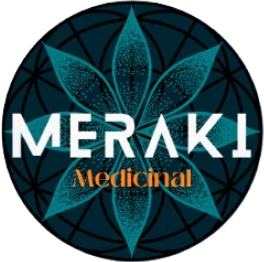Today we have one ongoing clinical trial for Methylene Blue investigating its effects/benefits on Alzheimer's disease, but did you know there are over 18,000 studies done on Methylene Blue today?
Backtracking to the 1800's, German chemist Heinrich Caro first synthesized the compound to dye fabrics. 15 years later Paul Guttmann and Paul Ehrlich discovered its purpose in treating malaria.
During the end of the 19th century it was also used to treat patients with psychosis, a condition where patients lose contact with reality.
This was the beginning of understanding the powerful broad-spectrum benefits MB had to offer.
Today, Methylene Blue is only FDA approved to treat a few conditions like cyanide poisoning, and methemoglobinemia. Although it is not FDA approved it is still available for purchase for research purposes. Mark Sloan, author of The Ultimate Guide to Methylene Blue, explains why networking and profit margins may have drove MB off the list for our go-to malaria defense and treatment option for depression, cancer, and more.
WHAT DOES METHYLENE BLUE DO?
Methylene Blue is a powerful antioxidant, especially for the mitochondria. It improves efficiency of electron transfer between the four complexes within the mitochondrial electron transport chain. It also prevents electron leakage by anything that inhibits mitochondrial functions such as environmental toxins.
This improves your cell's energy production and efficiency. It also helps reduce the formulation of superoxide radicals in the process of oxidative phosphorylation which improves the cell's ability to use oxygen.
This improves your cell's energy production and efficiency. It also helps reduce the formulation of superoxide radicals in the process of oxidative phosphorylation which improves the cell's ability to use oxygen.
WHAT ARE SOME OF THE BENEFITS?
Methylene Blue has been widely studied and here is a brief list of some of the harder-hitting benefits:
What most report feeling is an increase in energy, focus, clarity, along with a general lift in mood and wellbeing.
HOW MUCH METHYLENE BLUE SHOULD I TAKE?
While Methylene Blue has amazing benefits at lower doses, it completely changes from an antioxidant to an oxidant at higher doses. An individual should start with a tolerable dose of 1-3mg and work up to 5-15mg only from a source that is USP (pharmaceutical grade) certified and under professional guide.
Studies show most benefits occur at <2mg per kg in bodyweight doses. Side effects may occur beyond that point or if on certain medications such as SSRI's (antidepressants).
SOURCING
As always do your own research and always ask a Dr. before changing anything in your routine.
1. Methylene blue inhibits replication of SARS-CoV-2 in vitro https://www.ncbi.nlm.nih.gov/pmc/articles/PMC7566888/
2. From Mitochondrial Function to Neuroprotection – An Emerging Role for Methylene Blue
https://www.ncbi.nlm.nih.gov/pmc/articles/PMC5826781/
https://www.ncbi.nlm.nih.gov/pmc/articles/PMC5826781/
3. Methylene Blue: The Long and Winding Road from Stain to Brain: Part 1 https://pubmed.ncbi.nlm.nih.gov/27576224/
4. Methylene blue is more toxic to erythroleukemic cells than to normal peripheral blood mononuclear cells: a possible use in chemotherapy https://pubmed.ncbi.nlm.nih.gov/16052340/
5. Methylene blue protects dopaminergic neurons against MPTP-induced neurotoxicity by upregulating brain-derived neurotrophic factor https://pubmed.ncbi.nlm.nih.gov/29882218/
6. Methylene blue. A possible treatment for manic depressive psychosis https://pubmed.ncbi.nlm.nih.gov/6222095/
7. Methylene blue and its analogues as antidepressant compounds https://pubmed.ncbi.nlm.nih.gov/28762173/
8. A two-year double-blind crossover trial of the prophylactic effect of methylene blue in manic-depressive psychosis https://pubmed.ncbi.nlm.nih.gov/3091097/
9. Neuroprotective Actions of Methylene Blue and Its Derivatives https://www.ncbi.nlm.nih.gov/pmc/articles/PMC3485214/
9. Neuroprotective Actions of Methylene Blue and Its Derivatives https://www.ncbi.nlm.nih.gov/pmc/articles/PMC3485214/
10. Methylene Blue in the Treatment of Neuropsychiatric Disorders https://pubmed.ncbi.nlm.nih.gov/31144270/
11. A controlled trial of methylene blue in severe depressive illness https://pubmed.ncbi.nlm.nih.gov/3555627/
12. Methylene blue exerts a neuroprotective effect against traumatic brain injury by promoting autophagy and inhibiting microglial activation https://pubmed.ncbi.nlm.nih.gov/26572258/
13. Alternative mitochondrial electron transfer for the treatment of neurodegenerative diseases and cancers: Methylene blue connects the dots https://pubmed.ncbi.nlm.nih.gov/26603930/
14. Methylene blue photodynamic therapy induces selective and massive cell death in human breast cancer cells https://bmccancer.biomedcentral.com/articles/10.1186/s12885-017-3179-7
15. Common antioxidant could slow symptoms of aging in human skin https://www.sciencedaily.com/releases/2017/05/170530140701.htm
For educational purposes only.


